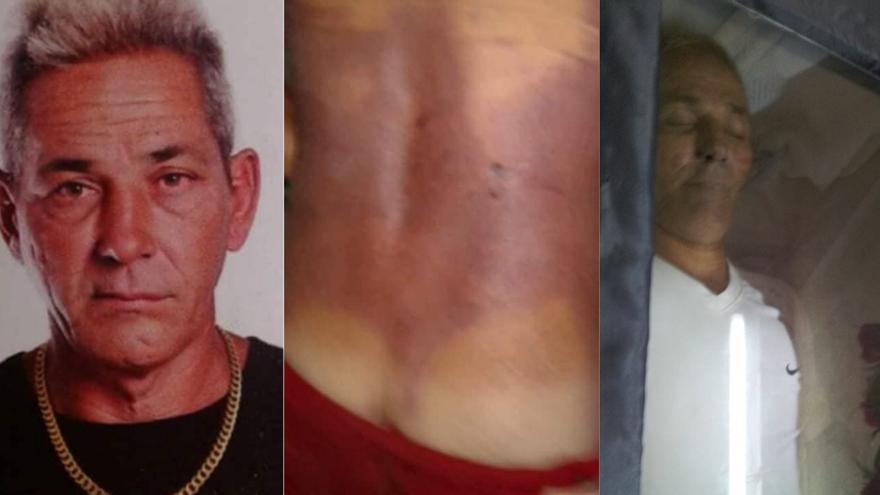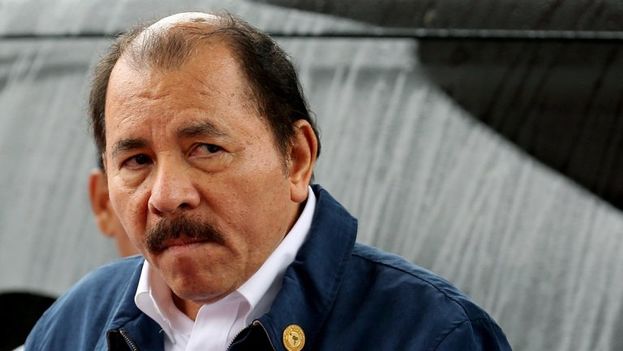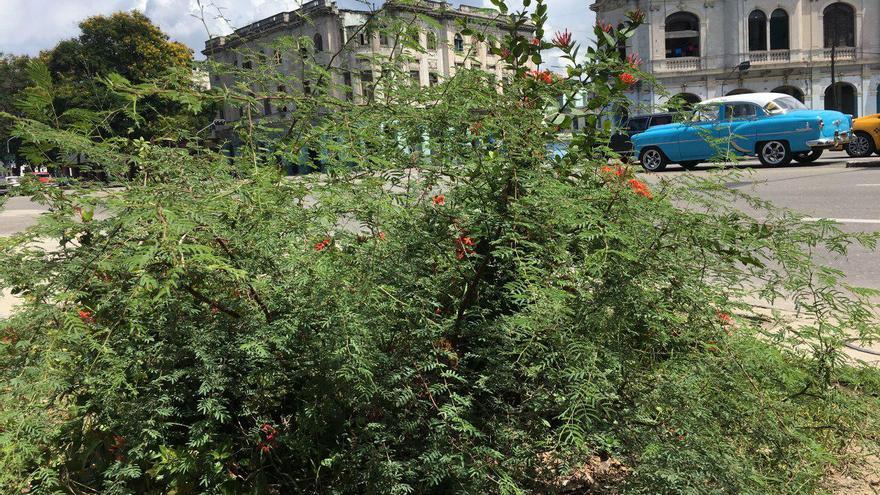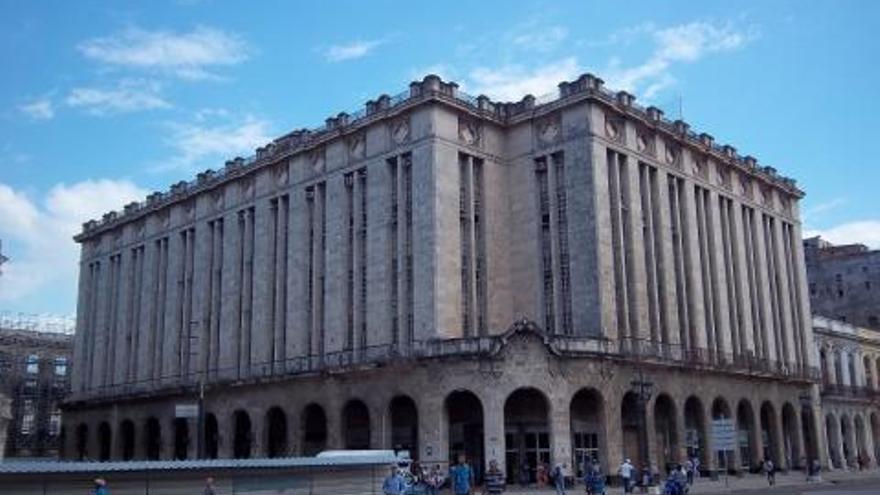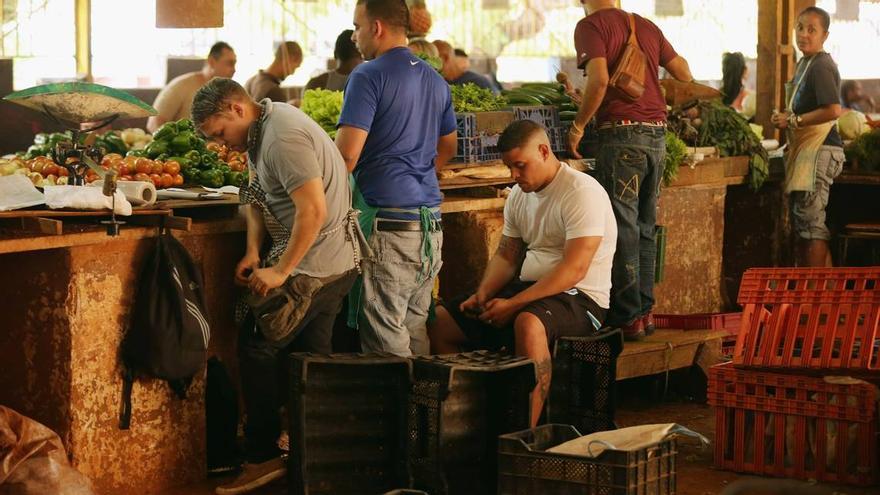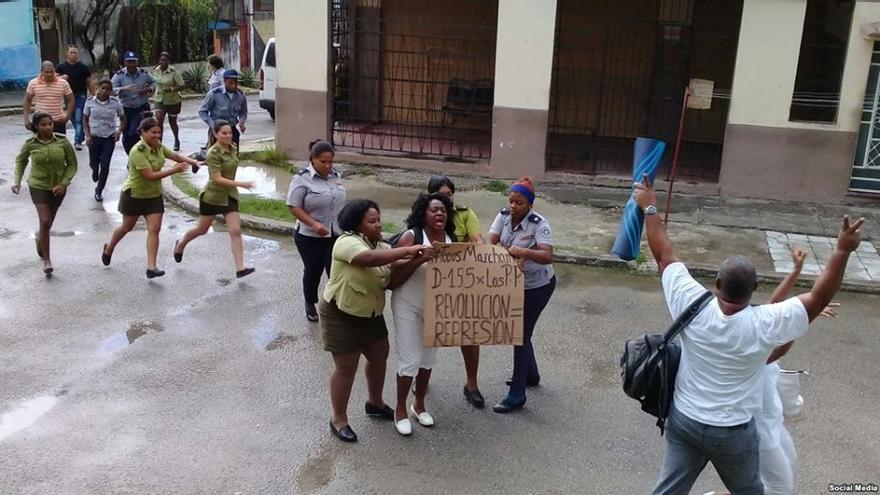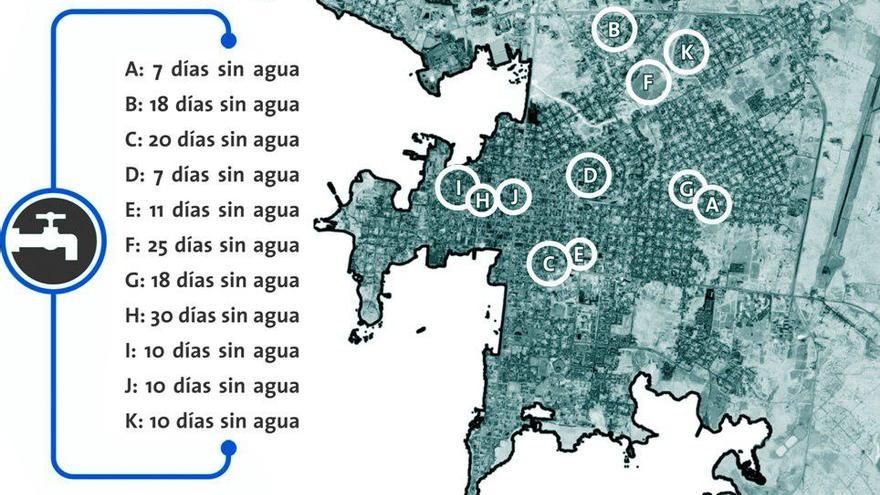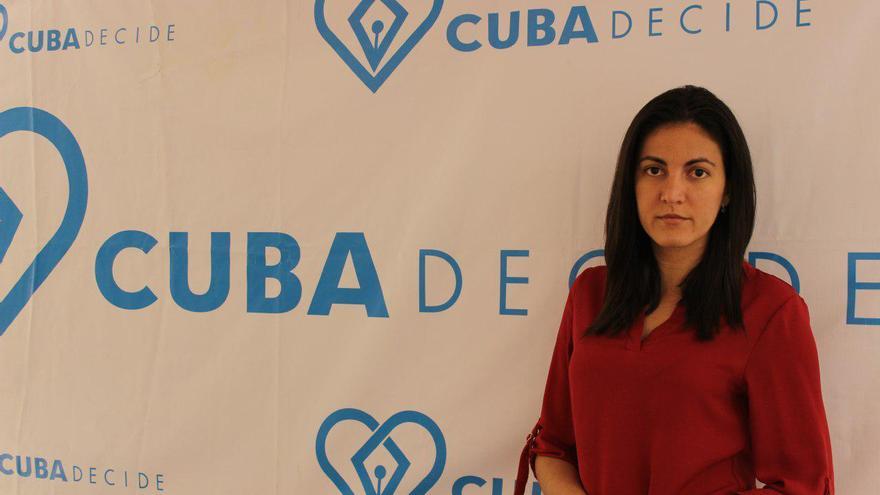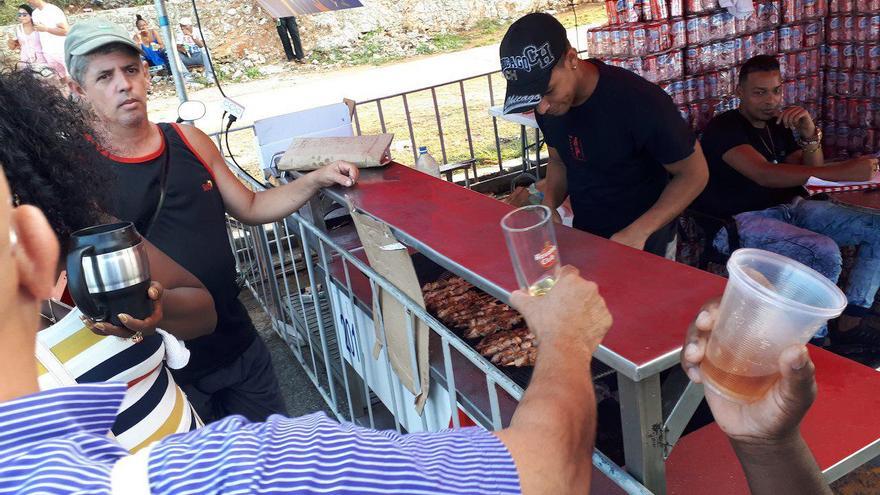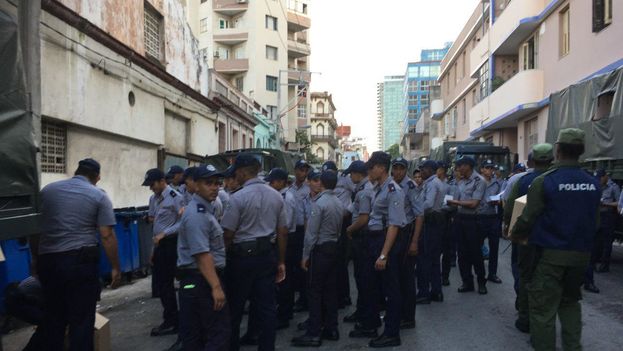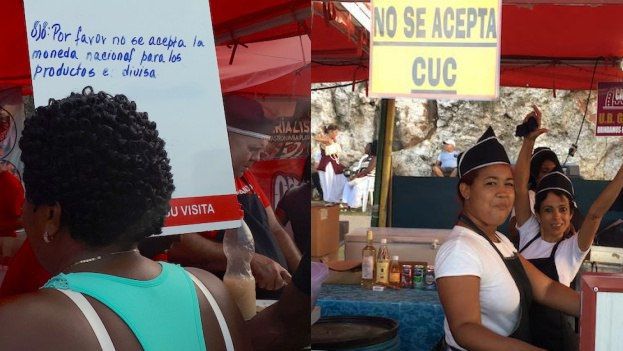It is a readjustment of the revolutionary rhetoric of the Cold War that uses the notion of diversity as a method to offer to the outside world an image of change, but with hardly any tweaks. State transvestism is also a policy that uses new means of managing political control and (self) transition being brought about by the old Cuban political elite.
This strategy started to be tested a decade ago by the National Center for Sexual Education (CENESEX), directed by Mariela Castro Espín, daughter of General Raúl Castro. From 2007, Mariela dominated the headlines when, to the party rhythm of the conga, she started to parade through the streets of Havana surrounded by gay people, insisting that sexual diversity formed part of the Revolution and “in a revolutionary manner.” continue reading
In 2008, CENESEX got the Ministry of Public Health to approve a resolution that authorized sex change operations, which regenerated great affection on the international level as well as on the island. At that time, the institution proposed a new family code and a law of gender identity.
The issue remained silenced for years, until a few days ago, when the Cuban National Assembly — totally controlled by the regime — approved, unanimously and true to the old Soviet style, a new Constitutional text prepared in secret which even Raúl Castro himself helped to edit. They say that it will be submitted very soon to popular consultation, although the general clarified that the consultation would consist of a debate supervised by the Communist Party.
Cosmetic and semantic politics
The project of the “new” constitution is getting tangled up at the same time with cosmetic and semantic politics. It says that private property will be recognized and that the construction of Communism will be renounced, although the Communist Party will continue togovern the destinies of the nation. It assures that socialism is irreversible, but behind the curtain the socialist model is being supplanted little by little by a neoliberal capitalism of the State, which concentrates power in a military elite and more and more cuts the budgets of state services like public health and education — areas on which the Cuban government has rested its legitimacy.
However, the paragraph that most stirred up the media and caused an explosion on social media was Article 68, which considers the “officially approved voluntary union between two persons with the legal capacity for it.” No longer is it limited to a man and a woman, as it was up until now. This simple change can open a pathway to the recognition of gay marriage in Cuba.
Marriage equality has its supporters and its detractors. In the United States and Europe, for example, it has been criticized by queer theorists and activists for the demobilization and the depoliticization it has generated inside these communities, which have seen marriage as the end of a historic agenda to fight for. But that is another discussion.
In Cuba, supporters will say that the approval of equal marriage signifies a step toward the recognition of individual rights, historically diluted in the impersonal and collective mass. To a certain extent they are right. I am in favor of all laws that favor groups that are vulnerable, whether for reasons of race, sexuality, gender, or politics. However, I cannot help pointing out the logic on which the recognition of marriage equality on the island is set up, and the consequences that it could have, thinking about the future and the history of the Revolution itself.
Marriage equality responds to assimilating policies that are being tried out by the State to create politically docile identities. Finally passed, marriage equality would create a protective framework basically circumscribed by the patrimonial one. For years we have seen many people stripped of the goods and properties of their partners, because they did not have the legal protection to inherit. But at the same time, it turns into a device, an instrument aimed at assimilating and canceling out a more comprehensive democratic discussion, not circumscribed to the specific issue of sexuality.
With the way things stand, marriage equality seems to be turning into another space of controlled diversity created for public post-revolution relationships. “With this proposed constitutional regulation, Cuba places itself among the countries at the vanguard of the recognition and guarantee of human rights,” pointed out Mariela Castro. In this way, marriage equality turns into an instrument of propaganda over human rights, an area in which the government has come under harsh criticism.
So, can a country which every year registers high numbers of arbitrary arrests for political motives be considered “at the vanguard” of human rights? A country that considers dissidents or opponents as mercenaries at the service of foreign powers or as traitors to the homeland? A country where freedom of expression, of association, among others, is practically prohibited?
Yesterday’s False Hope
Some activists from the LGBTI community in Cuba have claimed this change as a result of the pressure they have exerted on the institutions. However, this conjecture doesn’t have much support if we take into account the strong pressure that opponents, the Cuban diaspora, the exiles, and international organizations have exerted for decades for the government to recognize other liberties and rights, while those who pull the strings of power haven’t moved a muscle.
Without discounting the agency or the importance of the work of activism, I must say that marriage equality is anchored to this “State transvestism” of which I spoke at the beginning. This policy, in addition to trying out new means of political control, promotes an amnesiac transition, the washing of national memory and the rewriting of history. It is a matter of reaccomodating or rewriting certain historical processes that connect the Revolution to discrimination and homophobia.
For decades homophobia in Cuba was a policy of the State that legimitized purges of gay people from institutions and their internment forced labor camps, like the infamous Military Units to Aid Production (UMAP), aimed at the construction of the Communist “New Man.” The washing of memory and the rewriting of history began in August of 2010, when Fidel Castro told La Jornada that he recognized his historical responsibility in the implementation of these forced labor camps.
A few months later, Mariela Castro, in an interview with the Swiss Institute for Cooperation (COSUDE), embarked on a damage control campaign where she ended up saying that “Fidel didn’t even know about UMAP. He was concentrating on the survival of the Revolution and on the changes that they were making in politics, the laws in favor of the rights of the people, amidst complex and tense international relations.”
Mariela Castro has tried to minimize the scope and scale of UMAP in the history of the Cuban Revolution. She even promised an investigation into the matter; we are still waiting for it. Since then, the director of CENESEX has said, in every forum she has appeared in or every interview that she gives, that UMAP was an isolated error and that they were by no means forced labor camps.
Mariela is not the only one engaged in this effort, other cultural commissioners are also trying to reproduce and export this version. If these speeches manage to take root, it’s possible that in a not too distant future, we will see UMAP represented in textbooks and in the public sphere as mere summer camps.
In Cuba I see many of the elements that Isaac Rosa pointed out in his novel Yesterday’s False Hope (2004). Rosa called attention to the existence in Spain of narrative forms that tend to tame and anesthetize the past, while offering a placid image of the Franco dictatorship.
One of the passages reads: “Consciously or unconsciously, many novelists, journalists, and essayists (and filmmakers, let’s not forget) have transmitted a deformed image of Francoism… By doing so they construct a digestible impression of the banana republic in front of the reality of a dictatorship that applied, in detail and until its last day, refined techniques of torture, censorship, mental repression, cultural manipulation, and the creation of psychological ways of thinking that even today we have not managed to completely get rid of.”
On the island, this type of representation goes back to the 90s. Let’s not forget conciliatory exercises like the film Strawberry and Chocolate (1993). “Fidel, with this film, assumed, and with nothing to say, we close internationally that horrible moment that some call a Chapter and that I prefer to call a “digression” that was the UMAP,” wrote the then-director of the Cuban Institute of Art and Film, Alfredo Guevara, to the comandante.
Finally, with the passing of marriage equality, Cuba would take an important step toward becoming a gay-friendly State, which can create large businesses in areas like tourism and sex change operations. Until now, the principal market for these surgeries is in Thailand, but the scene could change because Cuban doctors are now carrying out these procedures, after having received the know-how of European specialists for several years, as part of the CENESEX program.
In recent days, Grupo Gaviota, a corporation belonging to the Cuban military — yes, the military — signed an agreement with the European chain Muthu Hotels & Resorts to manage a hotel in Cuba aimed at the LGTBI community. The company made the announcement with great ceremony on its Twitter account.
The police raids and underground spaces, the forced labor camps and the state-sanctioned homophobia, will remain in obscurity. Celebrities of the gay world can marry in Cuba without fear of being arrested. Now more than ever we need a policy of memory that is not aimed at the clinical space of healing, but rather at justice and compensation for the victims of this harmful policy. It is the only way to ensure that the past not be that “yesterday’s false hope” of which Isaac Rosa spoke.
Translated by: Sheilagh Carey
______________________________
Editors’ Note: Abel Sierra Madero (Matanzas, Cuba, 1976) is an essayist, researcher, professor, and critic. With the author’s permission we are reproducing this text which was previously published in the Mexican magazine Letras Libres.
The 14ymedio team is committed to serious journalism that reflects the reality of deep Cuba. Thank you for joining us on this long road. We invite you to continue supporting us, but this time by becoming a member of 14ymedio. Together we can continue to transform journalism in Cuba.
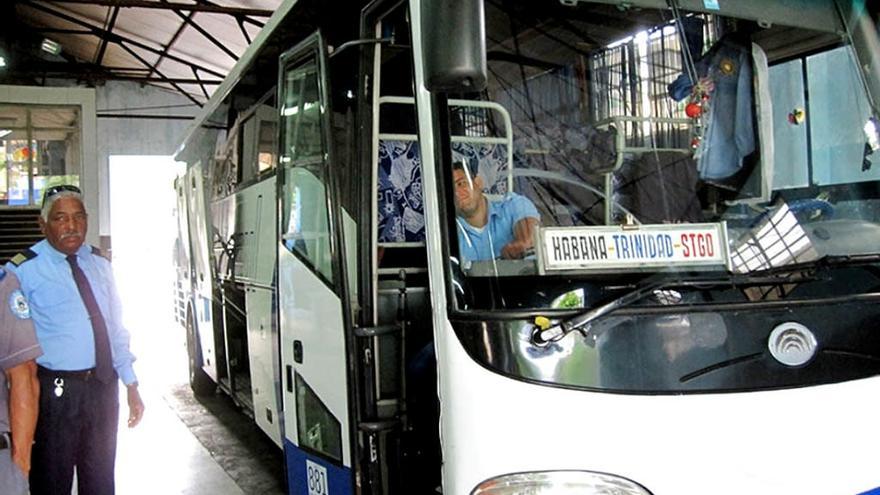
![]() 14ymedio, Gladys Carbonell, Havana, 4 September 2018 — In addition to the terrible catastrophe of the plane crash in Havana, there have been many road transport accidents in Cuba lately, in which, unfortunately, people of all ages have died, including children which is the worst and most heartbreaking. There have also been many other accidents in different provinces of the country.
14ymedio, Gladys Carbonell, Havana, 4 September 2018 — In addition to the terrible catastrophe of the plane crash in Havana, there have been many road transport accidents in Cuba lately, in which, unfortunately, people of all ages have died, including children which is the worst and most heartbreaking. There have also been many other accidents in different provinces of the country.
